Falling property values are dragging on retailers’ results, potentially affecting their ability to borrow or invest. How are they responding?
As if inflation and the march of the discounters wasn’t enough to contend with, supermarkets have something else weighing on their profits: the plummeting value of their estates.
Sainsbury’s this week became the latest to reveal the impact, with its results noting a £141m writedown on property, plant and equipment included in its adjusted underlying profit before tax in the year to 4 March. It also invested £560m in prices, with underlying profit before tax dipping 5% despite a 5.4% rise in group sales.
That followed this month’s announcement of a walloping £982m writedown in Tesco’s statutory profit before tax in the year to 26 February, to £1bn – primarily on property.
And Waitrose parent John Lewis made a loss before tax of £234m in the year to 28 January, ballooning from a £27m loss the previous year, largely due to property writedowns, its results showed last month.
Despite their decline in value, food stores remain comparatively attractive to investors, says Christopher Mertlitz, head of European Investments at real estate investment trust WP Carey. “It’s one of the most interesting asset classes overall and certainly within the retail space it’s been the most attractive and sought after for a while,” he says. “Even more so after Covid, when people suddenly seemed to remember you need to eat.”
But in common with all real estate assets, values have been hit by soaring interest rates. “Much of the market relates to debt-driven investors, so when their borrowing costs increase, the values of the properties they are buying fall” since the return relative to the investment lowers, says Matthew Hobbs, head of retail lease advisory at property consultancy Colliers.
The top five buyers of supermarkets
(Transaction value £m)
Supermarket Income REIT
1,830
Tesco
1,612
Realty Income
1,099
Sainsbury’s
520
LXI REIT
277
Source: Property Data UK July 2017 to March 2023 and Atrato Capital
So, how does it affect supermarkets? And what are they doing about it?
The losses can be enormous. “The last time there was a major writedown in supermarket property values was in 2015,” says Hobbs, driven at the time by an excess of land acquired by the retailers in the preceding ‘race for space’. “As a result, in their 2015 accounts, Tesco reported a pre-tax loss of £6.4 bn – its worst loss in its then 97-year history,” says Hobbs.
But it’s important to remember “these are non-cash writedowns”, says Mertlitz. “It’s purely an accounting-driven adjustment. As part of your audits you calculate the value of these assets. If it’s more than a certain threshold then you’re triggering a writedown and that is what has happened.”
As rates fall again, says Ben Green, director of Atrato Capital, investment adviser to Supermarket Income REIT, “I think there’ll be a rally in supermarket values, and we’ll see them go back up again, because ultimately, they’re long-duration, cashflow-type of assets, and those are worth more in a low interest rate environment.”
Indeed, the green shoots of a rally may already be emerging, with news from Font Real Estate this week of a “cautious rebound” in investor appetite in UK grocery-backed assets, following a sharp dip in 2022. The first quarter saw around £330m of deals on larger-format stores, more than the total in quarters one to three last year.
But any rally won’t necessarily make it back onto the balance sheets, says Green. The writedown – or impairment – in accounts is typically the result of a “very significant move” in values, he says. “Most companies don’t revalue their real estate on a regular basis” in their accounts, he adds.
Read more:
-
M&S to invest additional £12.5m in London stores
-
Lidl reveals hundreds of potential sites for new stores
-
Morrisons sale and leaseback stores ‘cheaper than other grocers’
-
Discounters target middle-class shoppers with shift to affluent areas
-
Collateral consequences
In the meantime, it could affect their ability to borrow. “If you own real estate and you want to use that as collateral to borrow and raise capital, clearly that collateral will be worth less so there is less that you can borrow against it,” says Mertlitz.
The fall in the underlying value of the business could also make it “harder to raise capital on the stock market”, so there will potentially be “less money to invest”, adds Hobbs.
That may not be a pressing concern to Sainsbury’s or Tesco, with “probably the strongest balance sheets in the sector”, says Green. “The market looks at earnings, not the value of their property portfolio.”
But for others, it may be prohibitive of sale & leasebacks, since doing so will “crystallise the loss” in the form of a lower return, says Hobbs.
“This is particularly important for operators with the highest debts, as selling off portfolios has been an effective way of buying down debt.”
Green notes: “Clearly, Morrisons and Asda have been taken private so they’re very highly levered now.”
The Telegraph reported last month that Asda had kicked off a review of its £8.6bn property estate, targeting sale and leasebacks, two years after the supermarket’s acquisition by the Issa brothers and TDR Capital in a £6.8bn debt-fuelled deal.
For Morrisons it was “speculated using property was part of their plans for raising capital” following its own £7.1bn debt-fuelled takeover by Clayton Dubilier & Rice in 2021, notes Green. “The value they can do that at now will be lower.”
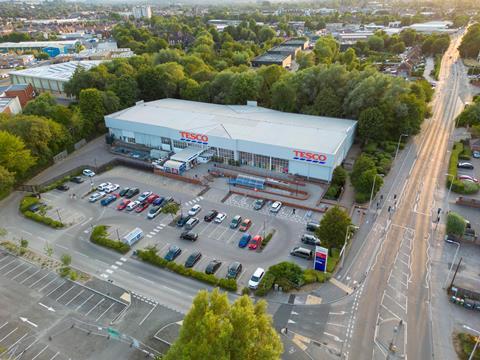
Owning the freeholds of 86% of its stores – one of the highest proportions in the game – Morrisons is also highly exposed to their value decline.
Retailers can mitigate the impact on sale and leaseback deals by agreeing to lease terms more favourable to the new landlord. “You might have annual rent reviews instead of every five years, and you’ll get paid more for that up front,” says Green.
But rather than selling, “in principle now would be a good time to buy some stores which have previously been the subject of sale and leaseback deals, particularly where rents are high”, says Hobbs.
And there are signs buying is within the strategy of those that can afford it. Green points to Sainsbury’s purchase in March of 21 stores from Supermarket Income REIT for £431m, a sale over which the latter had little choice, since the supermarket had an option to buy them.
Sainsbury’s decision to buy “shows I think the strategic direction they’re going in”, says Green.
Tesco, too, is still in the market to buy stores, though the sizeable deals it might prefer are in short supply, Green adds.
Both Tesco and Sainsbury’s have been among the top five buyers of supermarkets from 2017 to 2023.
As for Waitrose, John Lewis chairman Sharon White is widely reported to be contemplating plans to sell a stake in the mutual. Any weakening in the value of such a stake could have implications for what Green sees as Waitrose’s likely desire to “raise money for capex into store refreshes and investment in online”.
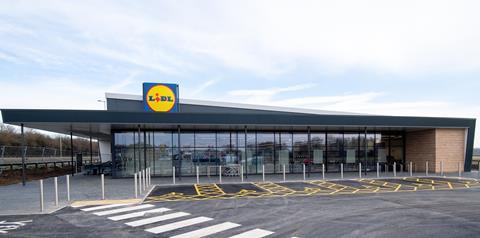
Discounter damage?
Even the discounters, for all their growth, are not immune to falling values, says Green.
He thinks it will “impact their ability to make the economics work on new space”.
Opportunities for suitable freeholds – their preference – are scarce because “everyone has seen them coming now for 10 years, so all the developers have bought all the decent sites and run a competition to see who bids the best lease terms”.
Meanwhile, the cost of capital has also increased for developers and construction costs have skyrocketed, “so the developer needs to find some way of squaring that circle, and the only way you can do that is to put rents up”.
“So, for the discounters the property writedowns basically translate into higher rents on new stores.”
Indeed, their rents have already risen. Analysis by Colliers in January suggested that, while superstore business rates would fall from 1 April, the rates payable on smaller stores suitable for discounters would rise by up to 7%, reflecting an increase in their open market rental value.
Lidl has scaled back new openings from the previous 50 a year to a projected 25 for 2023, while Aldi is weighting its planned 40 openings toward the end of the year.
“Maybe they’re waiting to see whether we get through the peak of the interest rate cycle, and developers will get cheaper funding again, and that will cheapen rents,” says Green.
With both rampantly claiming market share – from this week on a combined 17.7%, up from 15.4% a year ago [Kantar] – perhaps there is a silver lining to the writedowns for traditional supermarkets after all.



![XOXO-Product-Shot[ALL FLAVOUR]-Sky-1920x1080](https://dmrqkbkq8el9i.cloudfront.net/Pictures/274x183/4/9/2/355492_xoxoproductshotallflavoursky1920x1080_806584_crop.jpg)




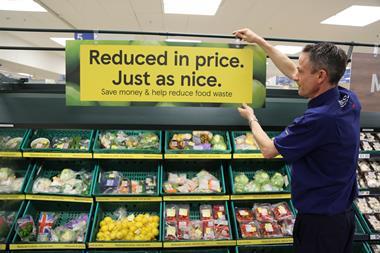

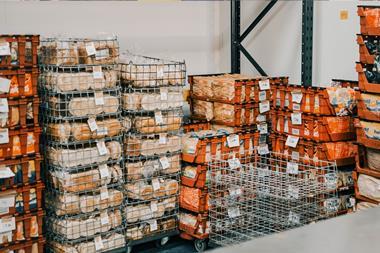

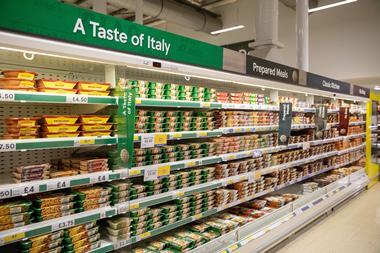







No comments yet